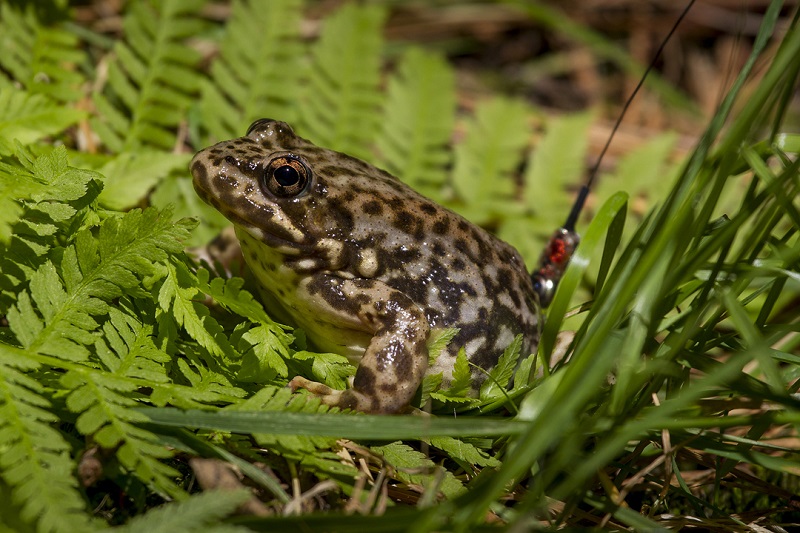Devastating Frog Fungus Triggers Cell Suicides

A deadly fungus spreading like wildfire through amphibian populations causes immune cells to commit suicide, a new study finds.
The chytrid fungus Batrachochytrium dendrobatidis kills frogs and other amphibians by infecting the skin, interfering with fluid and electrolyte levels, and ultimately causing death by cardiac arrest. The results have been devastating to frog populations worldwide: In the Sierra Nevada in California, for example, infection by B. dendrobatidis wiped out 75 percent of the mountain yellow-legged frog (Rana muscosa) population in only four years. The species is now considered endangered.
Early research into the disease revealed that few white blood cells, or leukocytes, mobilized in the skin of infected amphibians. Leukocytes, part of the immune system, are soldier cells tasked with clearing the body of foreign invaders, and they're typically very robust in amphibians, said study researcher Louise Rollins-Smith, a professor of pathology, microbiology and immunology at Vanderbilt University in Nashville, Tenn. [40 Freaky Frog Photos]
"They should be capable of recognizing any kind of pathogen and calling in the leukocytes," Rollins-Smith told LiveScience.
To find out why the immune response seemed stunted, Rollins-Smith and her colleagues cultured leukocytes, from the immune systems of the African clawed frog (Xenopus laevis) both in and out of the presence of the chytrid fungus. In the presence of the fungus, the leukocytes didn't reproduce as much as they did in the no-fungus condition. A similar pattern was seen with immune cells of the northern leopard frog (Rana pipiens) and with both mouse and human leukocytes.
Further investigation revealed that immune cells exposed to the fungus commit apoptosis — essentially, they kill themselves. Apoptosis is programmed cell death, a natural process that clears old, damaged or unnecessary cells from the body. B. dendrobatidis somehow activates the cellular signals that start this process in immune cells, the researchers report Friday (Oct. 18) in the journal Science.
"The fungus has its own mechanism to interfere with any kind of useful immune response," Rollins-Smith said.
Sign up for the Live Science daily newsletter now
Get the world’s most fascinating discoveries delivered straight to your inbox.
"The big question that is left unanswered is, What's the nature of the factor produced by the fungus that is causing the immune paralysis?" she added. "We've been working to begin to characterize it, but we're a long way to understanding it yet."
The hope is that with enough understanding of how the fungus functions, researchers can develop a vaccine to be used in captive amphibian populations. Those captives could then be re-released into the wild to repopulate areas devastated by the infection.
Follow Stephanie Pappas on Twitter and Google+. Follow us @livescience, Facebook & Google+. Original article on LiveScience.

Stephanie Pappas is a contributing writer for Live Science, covering topics ranging from geoscience to archaeology to the human brain and behavior. She was previously a senior writer for Live Science but is now a freelancer based in Denver, Colorado, and regularly contributes to Scientific American and The Monitor, the monthly magazine of the American Psychological Association. Stephanie received a bachelor's degree in psychology from the University of South Carolina and a graduate certificate in science communication from the University of California, Santa Cruz.









